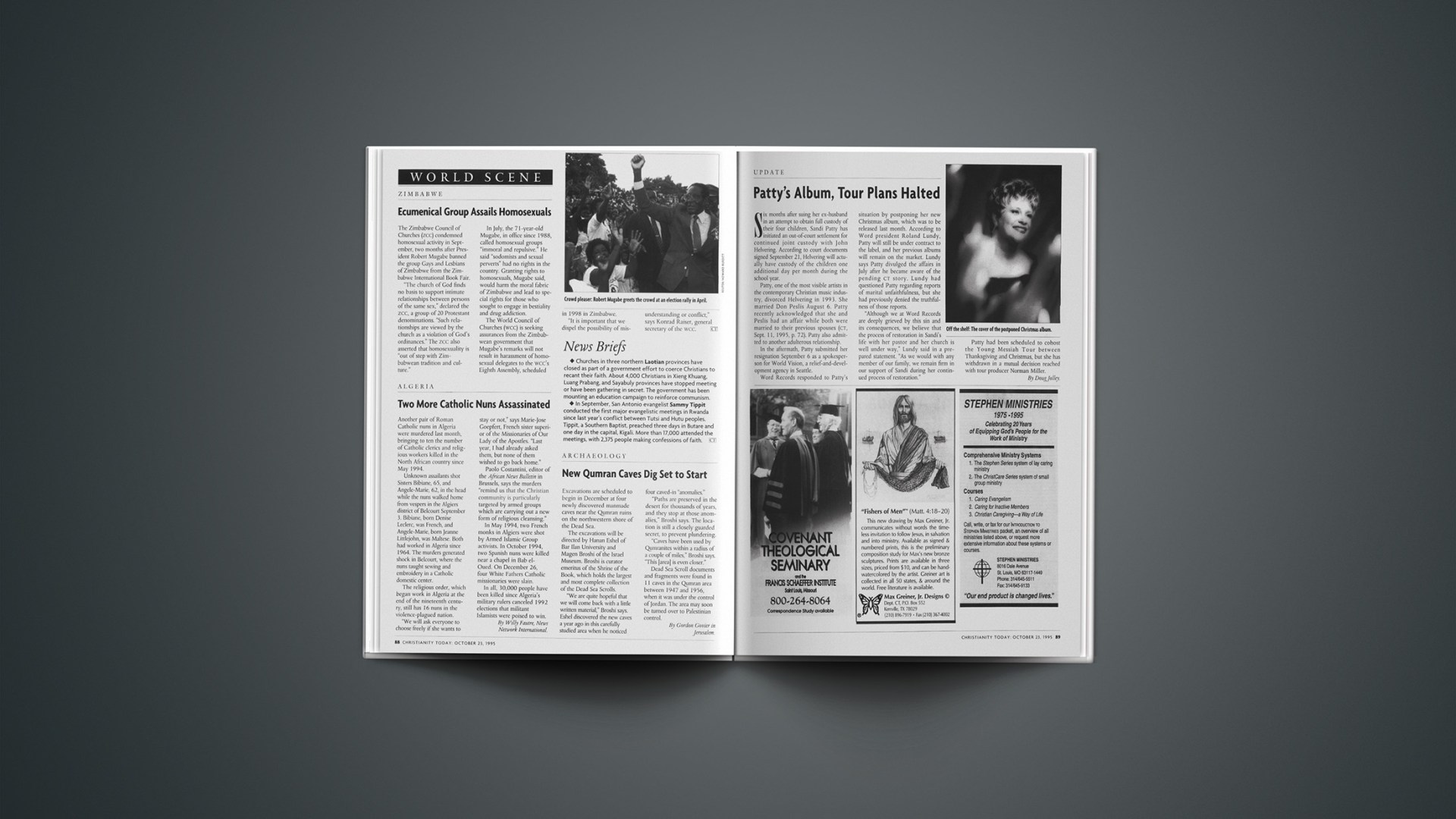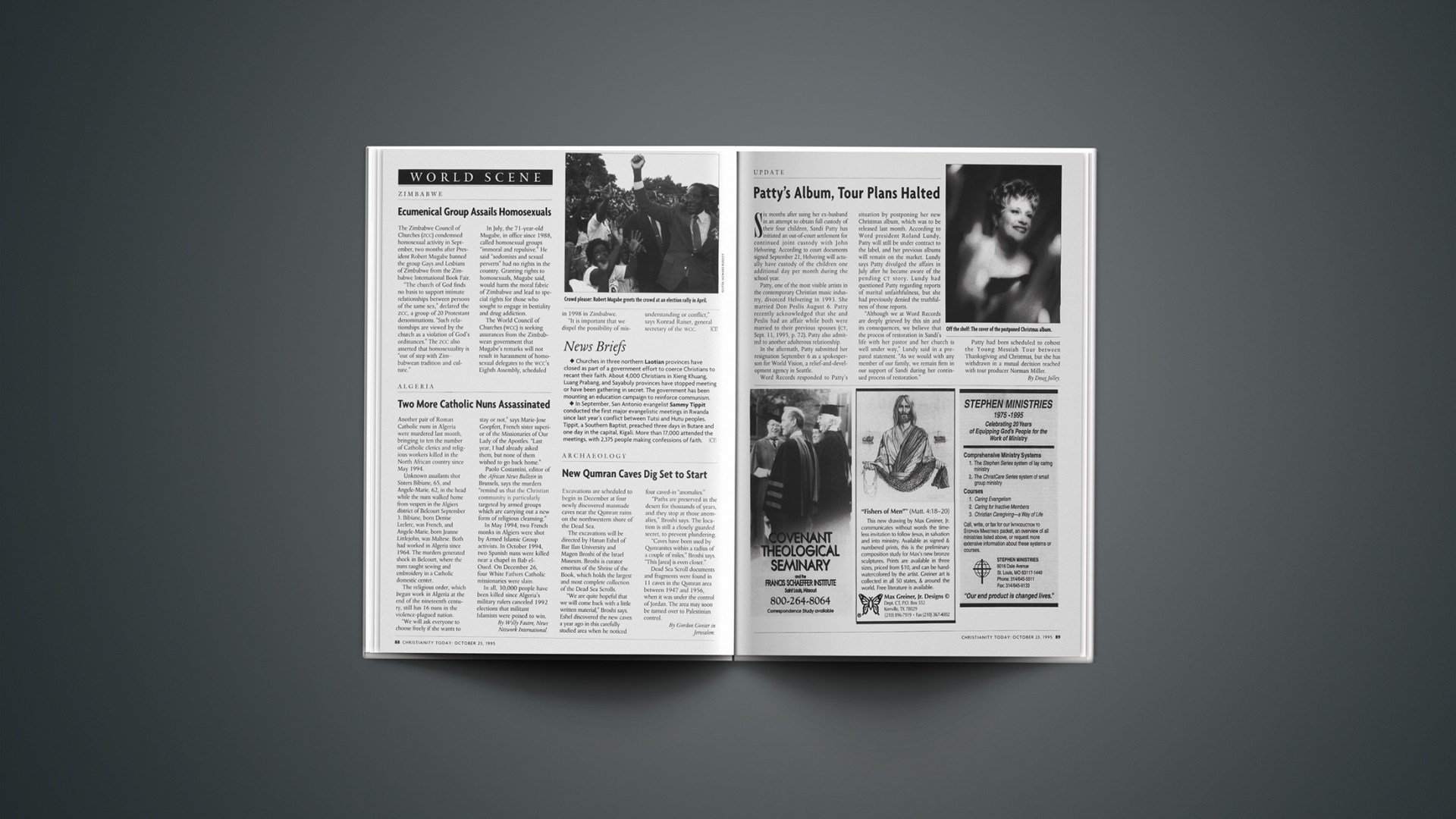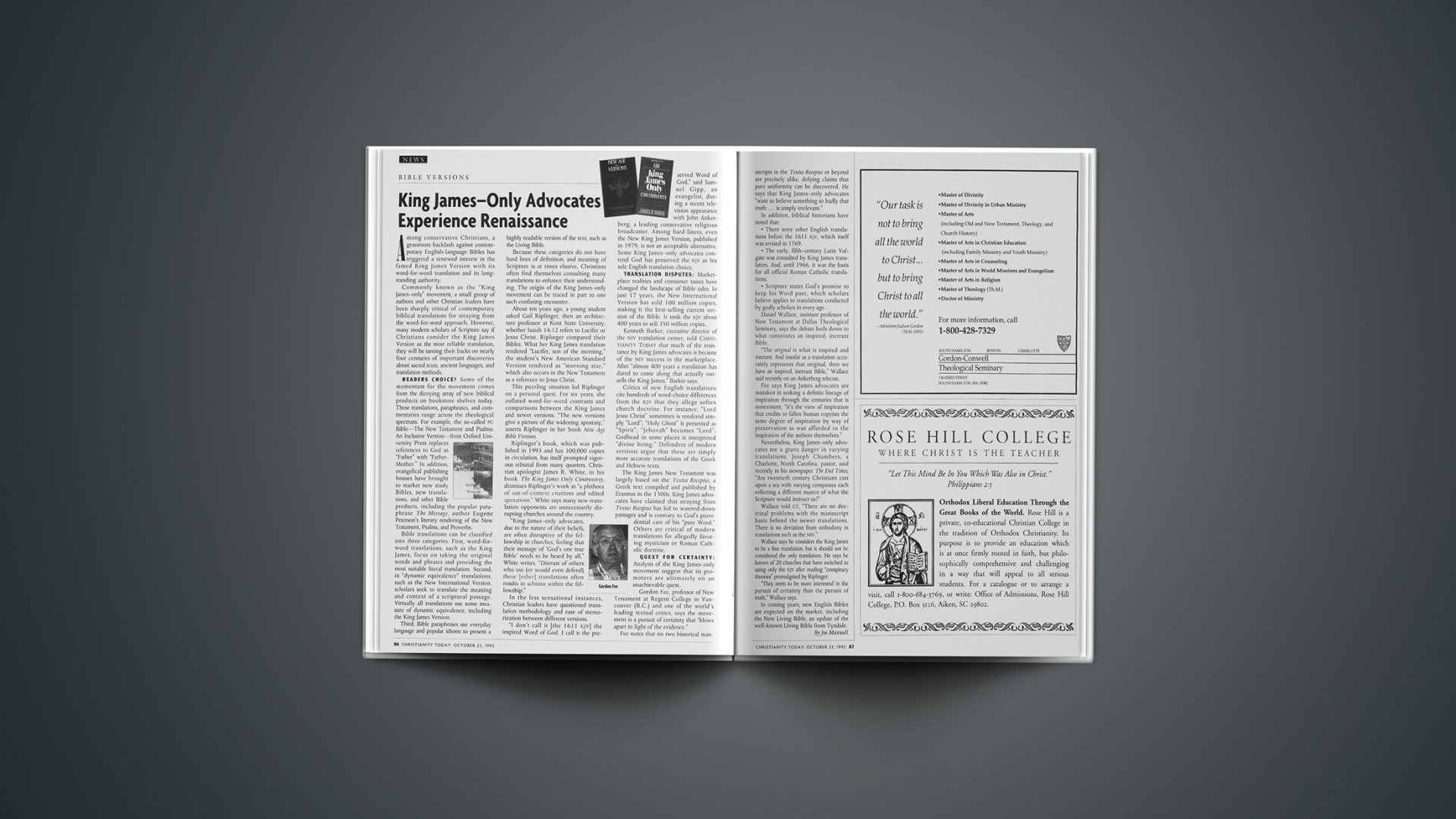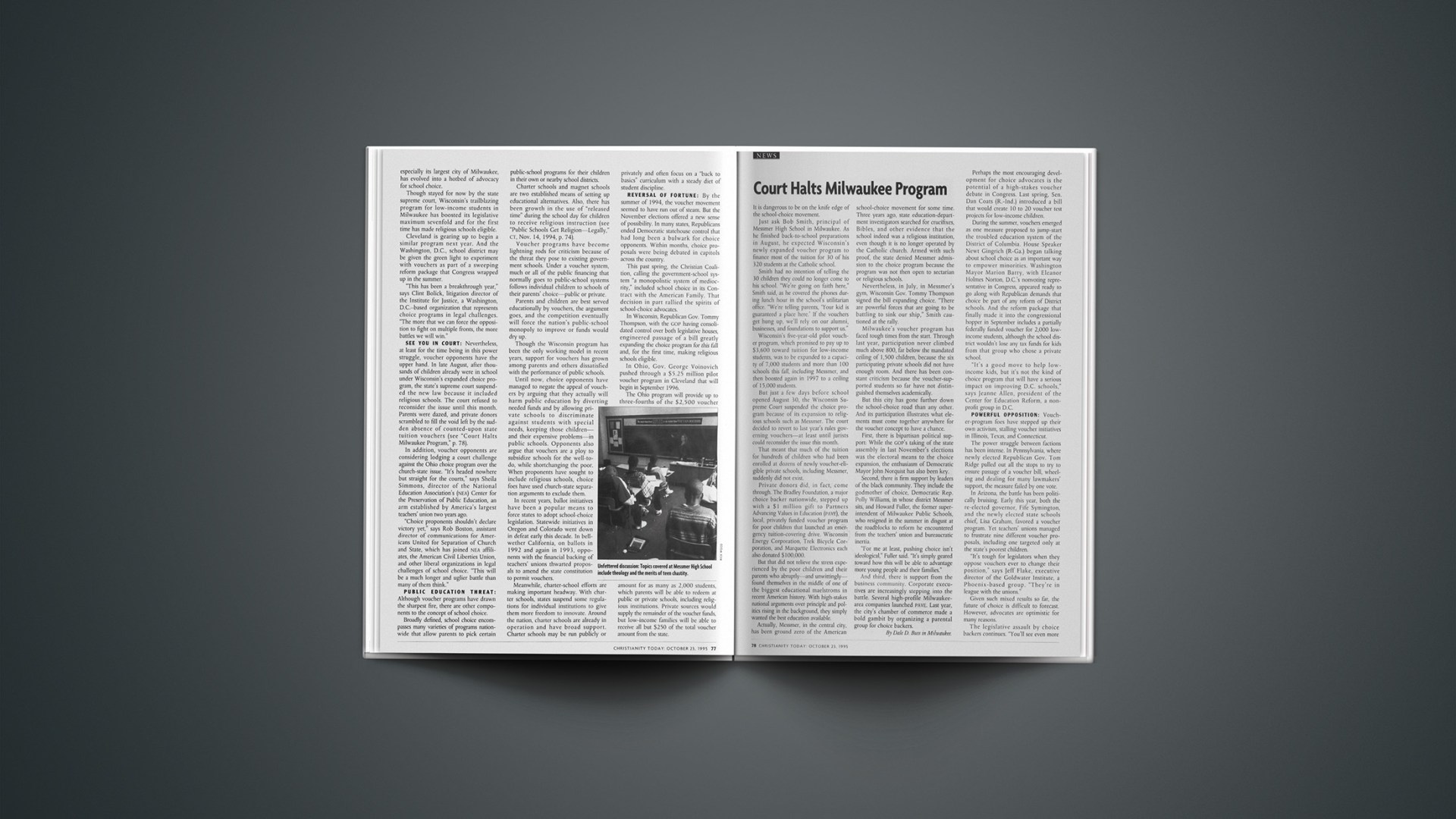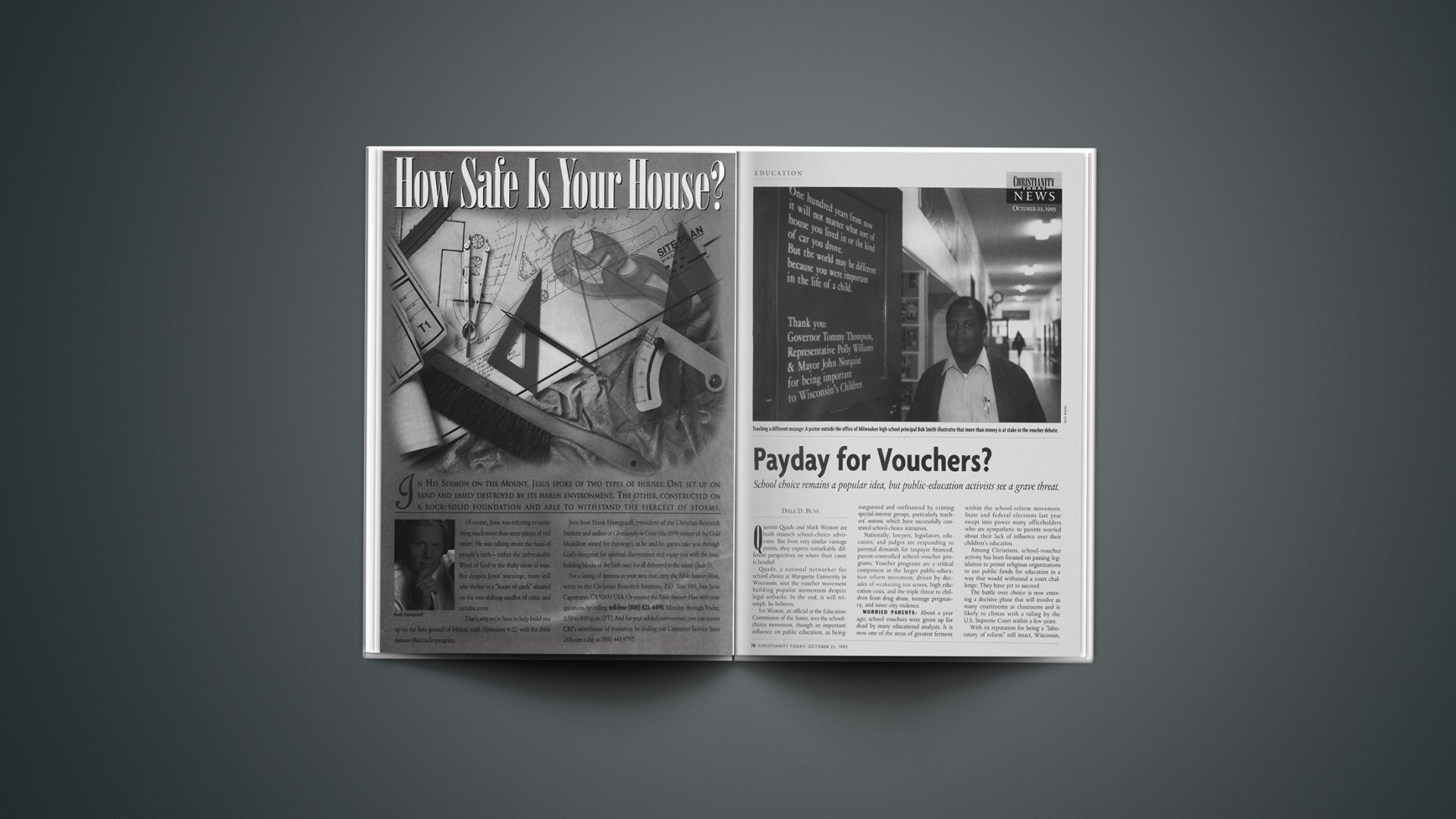Six months after suing her ex-husband in an attempt to obtain full custody of their four children, Sandi Patty has initiated an out-of-court settlement for continued joint custody with John Helvering. According to court documents signed September 21, Helvering will actually have custody of the children one additional day per month during the school year.
Patty, one of the most visible artists in the contemporary Christian music industry, divorced Helvering in 1993. She married Don Peslis August 6. Patty recently acknowledged that she and Peslis had an affair while both were married to their previous spouses (CT, Sept. 11, 1995, p. 72). Patty also admitted to another adulterous relationship.
In the aftermath, Patty submitted her resignation September 6 as a spokesperson for World Vision, a relief-and-development agency in Seattle.
Word Records responded to Patty’s situation by postponing her new Christmas album, which was to be released last month. According to Word president Roland Lundy, Patty will still be under contract to the label, and her previous albums will remain on the market. Lundy says Patty divulged the affairs in July after he became aware of the pending CT story. Lundy had questioned Patty regarding reports of marital unfaithfulness, but she had previously denied the truthfulness of those reports.
“Although we at Word Records are deeply grieved by this sin and its consequences, we believe that the process of restoration in Sandi’s life with her pastor and her church is well under way,” Lundy said in a prepared statement. “As we would with any member of our family, we remain firm in our support of Sandi during her continued process of restoration.”
Patty had been scheduled to cohost the Young Messiah Tour between Thanksgiving and Christmas, but she has withdrawn in a mutual decision reached with tour producer Norman Miller.
By Doug Jolley.

